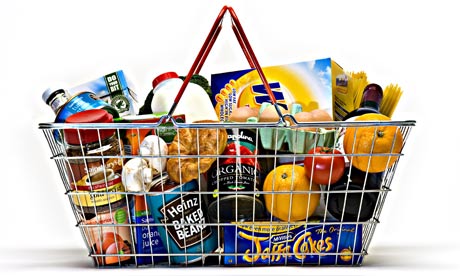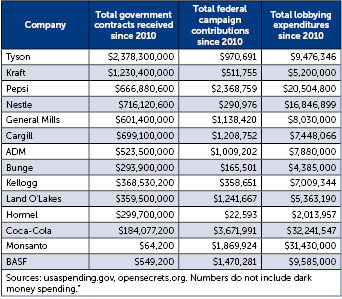Today, the majority of people in the United States do not know where their food is coming from. This is probably because the people in charge of our food industry do not want people to know that our food system is completely corrupt.
Corruption is a simple matter of right and wrong. Anyone or anything can become corrupt based on the actions the person or thing practices. In this case, the food system that is used to circulate the majority of the world’s food products to public markets has become corrupt.
The interesting part about our corrupt food system is that most of the people who consume the products have no idea where these products came from or how they were prepared. In the food system we have today, four or five large corporations own the majority of all food products sold in grocery stores today. There are hundreds of different brands of meat, produce, snacks, or whatever types of food you can think of that are sold in a supermarket but, its really only a handful of corporations that own the greater part of all of them.
In the film Food Inc., Eric Schlosser an American author, activist, and journalist talks about how big business has alluded the general public and turned the American food industry into a corporate monopoly. Schlosser goes on to say, “The average grocery store has 47,000 products which makes it look like there is a large variety of choice – but it is an illusion – there are only a few major companies and a few major crops involved.” Schlosser and the rest of the experts go on to talk about how big business runs the food industry and how their methods to grow bigger and better food have substituted the quality of our food for higher profits. That’s the problem, if people knew that large corporations were behind our food and that they were making our food in an unnatural, inhumane manner, they would probably have something to say about it.
Our food system is corrupt because the people in charge of it know what they are doing to our food is wrong but, they still do it anyway. In an ideal world, the people who know the most about our food would be in charge of developing how our food system works. Unfortunately, we do not live in an ideal world.
There are too many problems to count in our food industry today but, a lot of them have to do with how our meat is prepared. The meat in our grocery stores is not prepared in a friendly, heartfelt way. The way most people want to believe that their meat is prepared is that the animal is born and raised on a farm where it was able to roam free and grow the way god intended it to live. They believe the animal was killed humanely by the farmers who raised it in a way that did not make the animal suffer. That would be nice if it were true. The fact of the matter is, in this corrupt food system we have today, animals are basically tortured in cramped quarters from birth up until the moment they are slaughtered.
Michael Pollan, another American author and journalist who worked on Food Inc. discusses how the animals that are raised in these massive farms and slaughterhouses are inhumanely mistreated. Pollan says, “Plus they are now feeding corn to animals like cows who, by evolution, are designed to eat grass and in some cases farmers are even teaching fish how to eat corn because it is so cheap.” Aside from not giving these animals the proper space and freedom to grow, these farms are feeding the animals feed that they cannot naturally digest. The farms use corn feed and growth hormones to fatten up these animals so we can harvest twice as much meat as these animals were supposed to carry.
Besides cows, the chicken is another mass-produced animal that is raised in hellish conditions to satisfy the needs of our corrupt food industry. Several facts and statistics about how the chickens we eat every day are actually being grown are up on truthaboutchicken.org. Today, chickens are being grown to twice the weight of chicken sixty years ago in about half the time. An appalling fact found on this site included, “Many chickens lie in their own waste for much of their lives, with open sores and infections. These unhealthy conditions could potentially increase the risk of foodborne illnesses like salmonella.”
The processes used in our food systems are horrific and mind-boggling but, the worst part is these corrupt practices are potentially life-threatening for humans. Because of the unethical methods used in today’s food industry, humans are contracting various foodborne illnesses from tainted meats that are sold every day in local grocery stores. These illnesses are the result of the unsanitary facilities that are used to raise and prepare these animals for slaughter. Cows and chickens are raised on farms with very little space and little to no maintenance, meaning these animals are constantly walking, living, and sleeping in their own feces which is a great way to get exposed to infections and other types of illnesses.
The number of people that have been getting sick from these types of tainted meat have not necessarily been greatly increasing; the diseases have just been getting worse. Marion Nestle, a well known author and professor of nutrition at NYU, gives us some facts and statistics about these foodborne illnesses and how they’ve progressed in her piece, Resisting Food Safety. She says, “Some years ago, a carefully investigated Listeria outbreak among 142 people who had eaten a commercially produced unpasteurized soft cheese caused 48 deaths and 13 cases of meningitis.” Nestle goes on to talk about how foodborne illnesses used to be some small form of Salmonella or Staphylococcus or some pathogen that was easily treated and resulted in pretty standard, non-lethal symptoms like diarrhea, stomach pains, nausea, etc. However, since the early 1990s the versions of these viruses and bacteria have been getting much more aggressive and much more deadly than they have been in the past. Diseases are scary and its scary to know you can contract these types of diseases from the food you buy at the super market everyday.
If our food system is having all these problems, shouldn’t we be doing something about it? Shouldn’t there be some sort of authoritative body to watch over these food production systems to make sure our food is actually safe to eat? We do, the only problem is, the groups in charge of watching over how our food is made play a big part in how our food industry has become corrupt.
Government programs like the FDA, USDA, and CDC are supposed to watch over food processing facilities and make sure there aren’t any health code violations, unhygienic processing practices, or any other method that could lead to possible contamination of meats or other food products. Consumer Reports, You are what they eat, discussed a great deal about how our government and how our food regulation departments, like the FDA, aren’t really doing anything about the way our food is being processed. The members of Consumer Reports were able to talk to feed-company executives and they said, “Our investigation raises concern that the federal government isn’t doing enough to protect the feed supply and that as a result the food we eat may not be as safe as it could be.” Even the executives from these corporations agree that the production of their food is a potential risk to the health of their consumer. A major reason for this is that there are not enough inspectors to consistently watch over the vast number of slaughterhouses and livestock farms that are in this country.
The FDA has around 700 employees in charge of inspecting all the processing plants that produce meat, eggs and poultry; which results in each one of these places getting an inspection every one to five years. Even when there are certain health and safety violations that are found in these processing plants, if the farm is owned by one of the large corporations, the heads of the corporations always has a friend on the inside of the FDA or somewhere in these government-based departments to help them get out of it. The makers of Food Inc. were able to show how former corporation executives from places like Monsanto land authoritative positions in departments like the FDA and USDA and are able to help their old business partners when they get into a bind. It is difficult to think of a way to free our food industry from the clutches of big business when these corporate executives have monopolized the industry around them.
The corruption that has overwhelmed our food industry starts and ends with big business. We cannot rely on greedy business owners to take proper care of our food when they already hide so much from the public with their illusions. Large profits are not a reasonable compromise when it puts the consumer at risk. We know what is going on behind the closed curtain of our food system; now its just about making an effort to do something about it.
Reflection Questions:
- Describe your understanding of the “writer’s project”? How were you able to identify the texts’ “project”? Discuss your own “project” as it pertains to this particular blog article.
To me, the writer’s project is all about the writer’s mission to use his/her skills as a writer to convey whatever message they are trying to send to the reader as best they can through their words. For each text that we went through, I would need to read the piece multiple times in order to get the full understanding of the work. Once I understood the piece, I could pinpoint the main argument and the main message the author was attempting to present to his/her audience. For my “project” I really tried to just narrow the focus of the entire piece to one main point and then connect the dots between the texts we read and how they related to my piece and how they helped to strengthen my main argument.
- Describe your completion of the “Sorting it Out” workshop? What sections were most beneficial to the development of your ideas—and why? Discuss how this workshop assisted in development of draft and/or assignment organization?
I was a little confused at times during the workshop but, overall I guess it helped narrow down the ideas we had on how to best complete our article. The most helpful sections in the workshop were section D, where we had to basically summarize the main argument of each piece into a few sentences, and the last section where we had to relate different passages from different articles to the same main idea because they helped really narrow down the great deal of information we had to absorb to a few main points. I used the workshop to narrow down the possible arguments I could make for my article to which topics I could best use that included all of them.
- Describe your understanding of synthesis. What is its importance? How did it manifest within your drafts and/or final blog article? Provide examples.
Synthesis is the breaking down of an article, or other piece of literature, to the bare essentials of that work. At first, you may have a very lengthy text about several different topics but, once you use synthesis, you can narrow the article to one main point and the different sections the author uses to strengthen and prove that main point. I needed synthesis to get the main ideas out of the texts we read and to get a couple ideas for a man argument using the information it provided. I pretty much drew an outline for my article laying out which sections would be where and how they would connect to each other and back to the main point. In all the works we read, there were a lot of immoral practices going on; so, I decided to write about the wrongness and corruption in our food industry.
- Describe your own accomplishment (ofsomething) during this unit.
I have a hard time getting the main points out of pieces of literature, like understanding what they really mean, so I was happy that I was able to learn how to extract main ideas from these articles.
- Discuss the evolution of the main idea. Where did you begin (include the example) and show its progress (again, include example) throughout the drafting/revision process. To what do you attribute its evolution?
Basically, whenever we read one of these articles, there was always something wrong happening in the food system. I decided to show the complete corrupt process of our food industry and all the ways it is affecting the consumer. At first it was just the idea of corruption and how the food industry was able to get away with all this stuff. Then, after the revisions, I was able to expand a little more and discuss the immoral processes they use and how it is affecting people and I was just able to get a better understanding of what they were doing and how it was wrong. Just going back over the works and really paying attention helped with my article’s evolution.
- Discuss what organizational strategies you implemented in order to structure this blog article. Provide examples from a section(s) of an earlier draft and other excerpts in later drafts to support your response.
I used an outline, I laid out exactly what I wanted to talk about from each article and how I wanted them to relate back to the main idea. I knew I wanted to use Food Inc. for their inside knowledge of the food industry and how it is corrupt from the farm to the supermarket. I wanted Nestle for her knowledge on foodborne illnesses and how they are affecting consumers through our food system. And I wanted consumer reports for their intel on how the government regulation departments, like the FDA, aren’t doing nearly enough to keep our food safe. I would jump straight from one topic to the next without having some sort of bridge between them. I would move from Pollan to Hurst without any context as to what they were saying and how it related back to my topic. In my final revision, I was able to connect each of their views to how the food industry has become corrupt.
- Provide an example of the final draft where you successfully synthesize 3 texts in a concise and direct manner. Discuss how this evolved throughout the drafting process for you.
In my final draft, I used Schlosser, Nestle, and Consumer Reports closely to talk about the corruption of the food industry. I believe they are best utilized to bring their own unique take on my main idea. I couldn’t bring them together into one main point because each of them has their own part in adding up to them total idea that our food system is corrupt. That is why they are necessary to my article.
- Discuss the evolution of the ‘lede’ in earlier drafts and its final version (provide examples of each): where did you begin, what feedback did you receive, and how did it end up in final blog article?
My first ‘lede’ looked something like this, “During the time that we, as a class, have focused on articles and topics regarding our food system, the thing that disturbs me the most is not the foodborne illnesses or the hellish, inhumane was our food is being produced; it’s the corruption of our food system.” I really didn’t draw the attention of a reader and sort of just jumped right into the facts about the food system. After several revisions it changed to this, “Today, the majority of people in the United States do not know where their food is coming from. This is probably because the people in charge of our food industry do not want people to know that our food system is completely corrupt.” I sort of get to draw the reader in by talking about something that might effect them which makes them concerned so they read on. I started with corruption, it led to how is the food system corrupt, and it lead to how are food system corrupt and how it is affecting you.
- Name a specific writing/researching/revision goal you’d like to work on during the next Unit projects.
I would like to try and find different ways to best narrow the down the key points in an article or piece of literature because although, the synthesis and “writer’s project” techniques worked, they weren’t the best solution for me to get the most out of each article. I would also like to try and use each piece we discuss to their full potential instead of trying to cram them with others in attempt to make our argument stronger, each one is credible enough as it is. I like this class but, the methods and ideas could be a little clearer.



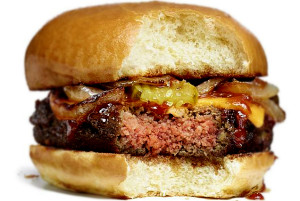
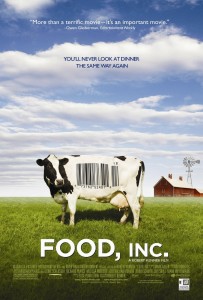
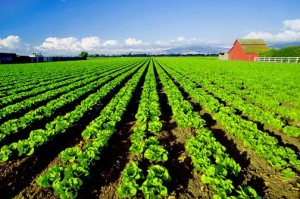
 Food, something humans consume in order to support the body. Historically, humans hunted and gathered, or farmed food in order to stay alive. Today, with the advances in technology and continuous increase of the world’s population, the food is supplied to us by the big bad food industry. The food industry is a very dangerous place. Much like every other business, big corporations are in charge, and that is not always a good thing. We are blinded by the lies told to us by food corporations and that needs to stop. It is time everyone knows the truth about the food industry. Food safety is a big issue and it is not regulated as well as it should be.
Food, something humans consume in order to support the body. Historically, humans hunted and gathered, or farmed food in order to stay alive. Today, with the advances in technology and continuous increase of the world’s population, the food is supplied to us by the big bad food industry. The food industry is a very dangerous place. Much like every other business, big corporations are in charge, and that is not always a good thing. We are blinded by the lies told to us by food corporations and that needs to stop. It is time everyone knows the truth about the food industry. Food safety is a big issue and it is not regulated as well as it should be. One of the fastest growing markets in the food industry is the organic market. We have been sold on this idea that organic foods are the greatest thing in the world. We have been told that they are less fattening, provide more nutrients, and taste better than nonorganic products. Well how much good do organic foods really do for us?
One of the fastest growing markets in the food industry is the organic market. We have been sold on this idea that organic foods are the greatest thing in the world. We have been told that they are less fattening, provide more nutrients, and taste better than nonorganic products. Well how much good do organic foods really do for us? 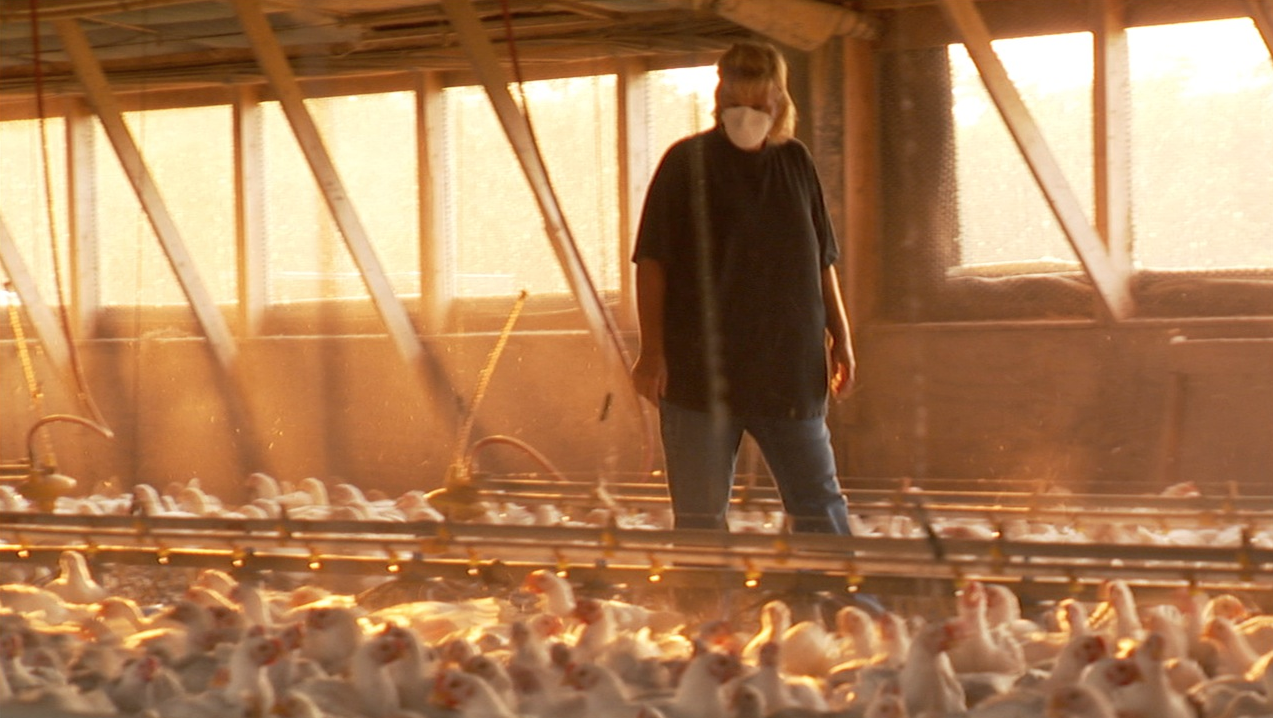 We assume that packaged food is always safe to eat, but that is not a good assumption. Marion Nestle is a Professor of Nutrition, Food Studies, and Public Health at New York University, and in her article
We assume that packaged food is always safe to eat, but that is not a good assumption. Marion Nestle is a Professor of Nutrition, Food Studies, and Public Health at New York University, and in her article  While big corporations are at fault for many of the food safety issues, the real culprit is the Federal Government. The Federal Government has ties to the to all the big food corporations and that is not good.
While big corporations are at fault for many of the food safety issues, the real culprit is the Federal Government. The Federal Government has ties to the to all the big food corporations and that is not good. 